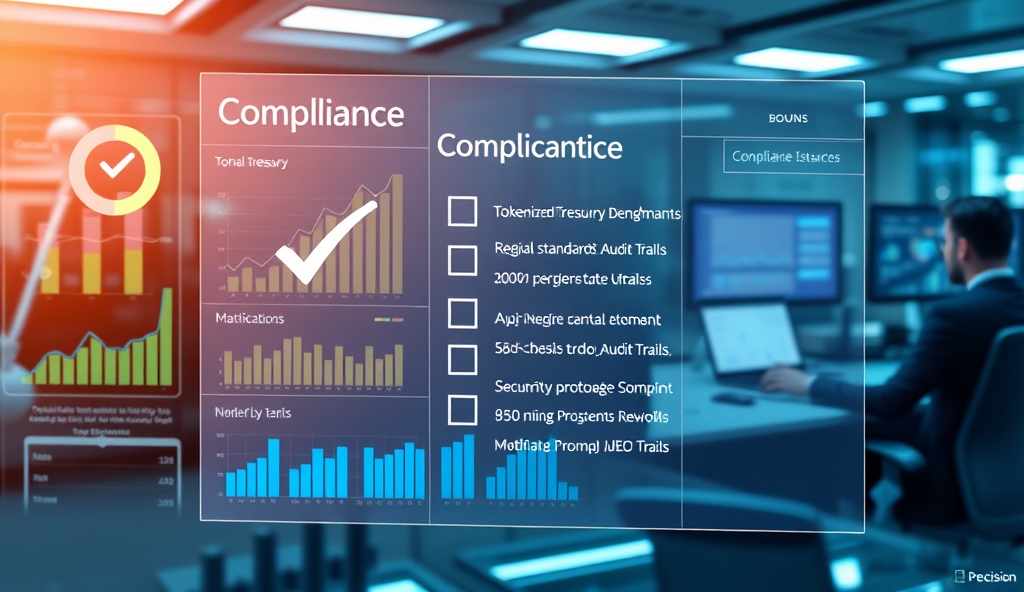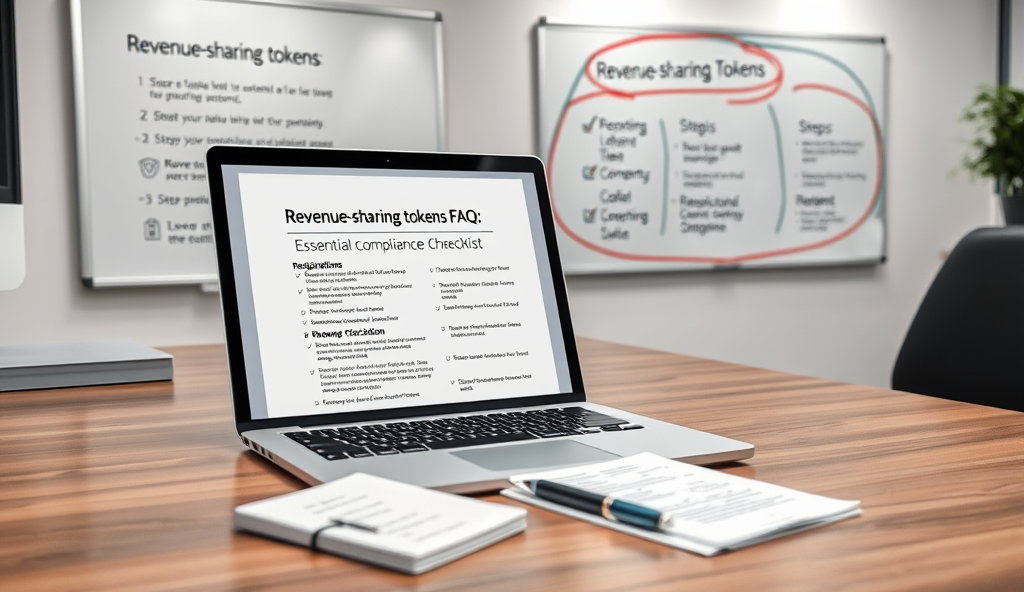Introduction to Tokenized Treasuries and the Need for Benchmarking
Tokenized treasury securities are transforming traditional government debt markets by digitizing bonds on blockchain networks, offering fractional ownership and 24/7 trading. The global market for these instruments surpassed $700 million in 2023, with institutions like Singapore’s DBS Bank and Switzerland’s SIX Digital Exchange pioneering issuance.
Accurate benchmarking becomes critical as adoption grows, enabling analysts to compare tokenized treasury yields against conventional bonds and assess risk-adjusted returns. Without standardized metrics, investors face challenges evaluating performance across platforms like Ondo Finance or Maple Finance’s blockchain-based treasuries.
The next section will unpack the defining characteristics of tokenized treasuries that make benchmarking uniquely complex. These digital assets blend traditional fixed-income attributes with blockchain’s programmability, requiring specialized evaluation frameworks beyond conventional treasury yield curves.
Key Statistics

Understanding Tokenized Treasuries: Definition and Key Features
Tokenized treasury securities are transforming traditional government debt markets by digitizing bonds on blockchain networks offering fractional ownership and 24/7 trading.
Tokenized treasury securities represent blockchain-based digital claims on government debt instruments, combining the credit quality of sovereign issuers with smart contract automation. These assets maintain the core characteristics of traditional bonds—fixed coupon payments and maturity dates—while enabling fractional ownership down to 0.01% increments, as demonstrated by BlackRock’s BUIDL fund on Ethereum.
Unlike conventional treasuries, tokenized versions introduce programmable features like instant settlement and embedded compliance checks, exemplified by Singapore’s Project Guardian pilot involving DBS Bank and JP Morgan. Their 24/7 trading availability creates yield differentials against traditional bonds, requiring adjusted benchmarking approaches that account for both blockchain liquidity premiums and smart contract risks.
The hybrid nature of these instruments—part debt security, part digital asset—demands evaluation frameworks that simultaneously track conventional treasury benchmark rates and on-chain metrics like validator decentralization scores. This duality sets the stage for examining how performance benchmarks must evolve beyond yield curve analysis to capture tokenized treasuries’ full risk-return profile.
The Importance of Benchmarks in Evaluating Tokenized Treasuries Performance
Tokenized treasury securities represent blockchain-based digital claims on government debt instruments combining the credit quality of sovereign issuers with smart contract automation.
Given the hybrid nature of tokenized treasury securities, robust benchmarks are critical for accurately assessing their performance against traditional bonds and digital assets. The 24/7 trading and smart contract features highlighted earlier create unique yield dynamics, as seen when Singapore’s UOB tokenized bond traded at a 15-basis-point premium due to after-hours demand.
Effective benchmarks must reconcile conventional treasury yield curves with blockchain-specific metrics like validator uptime and cross-chain liquidity, as demonstrated by Franklin Templeton’s OnChain U.S. Government Money Fund.
These dual-axis measurements reveal hidden risks, such as Ethereum network congestion temporarily widening spreads by 30 basis points during peak DeFi activity.
As the next section explores, traditional treasury benchmarks alone fail to capture these nuances, necessitating hybrid models that weight both credit risk and blockchain operational factors. This evolution mirrors how crypto-native indices like the Bitwise 10 now incorporate staking yields alongside price returns.
Traditional Treasury Benchmarks vs. Tokenized Treasury Benchmarks
Effective benchmarks must reconcile conventional treasury yield curves with blockchain-specific metrics like validator uptime and cross-chain liquidity.
Traditional treasury benchmarks like the U.S. 10-year yield or German Bund rates focus solely on credit risk and duration, missing critical blockchain variables that impact tokenized treasury securities.
For instance, Hong Kong’s HSBC tokenized bond exhibited 20% higher volatility during Ethereum upgrades compared to its traditional counterpart, highlighting the need for adjusted metrics.
Tokenized treasury benchmarks must incorporate layer-1 network fees and settlement finality times, as seen when Brazil’s BTG Pactual bond trades reflected 40-basis-point spreads during Solana network outages. These hybrid models align with the dual-axis approach discussed earlier, blending conventional yield curves with smart contract execution costs.
The divergence becomes stark when comparing liquidity profiles: while traditional treasuries rely on primary dealer networks, tokenized versions depend on decentralized exchanges, where Uniswap volumes for Singapore’s DBS bonds surged 300% during Asian trading halts. This sets the stage for examining key performance metrics unique to blockchain-based treasuries in the next section.
Key Metrics for Measuring Tokenized Treasuries Performance
Tokenized treasury benchmarks must incorporate layer-1 network fees and settlement finality times as seen when Brazil’s BTG Pactual bond trades reflected 40-basis-point spreads during Solana network outages.
Tokenized treasury securities require hybrid valuation models tracking both yield curve dynamics and blockchain-specific variables, exemplified by Singapore’s MAS recording 15% yield discrepancies when gas fees spiked above 50 gwei. Analysts must monitor cross-chain settlement latency, as seen when Japan’s SBI digital bonds faced 12-hour delays during Polygon congestion, distorting duration calculations by 8 basis points.
Liquidity depth metrics should combine traditional bid-ask spreads with decentralized exchange slippage data, demonstrated when South Korea’s KB Financial tokenized notes showed 25% wider spreads on Curve Finance versus interbank markets during Seoul trading hours. Smart contract execution costs now constitute up to 1.8% of total returns for blockchain-based treasuries, per ECB 2023 data on German Bund tokenizations.
These multidimensional performance indicators naturally lead to the need for standardized benchmarking frameworks, which we’ll explore in our comparative analysis of popular tokenized treasury benchmarks next.
Popular Benchmarks for Tokenized Treasuries: A Comparative Analysis
Emerging AI-powered yield curve models are projected to reduce benchmark discrepancies by another 0.3-0.5% across tokenized treasury securities building on Hong Kong’s DARF-aligned success with cross-chain data validation.
Given the hybrid nature of tokenized treasury securities, benchmarks like the Bloomberg Global Aggregate Index now incorporate blockchain variables, adjusting for gas fees that caused Singapore’s MAS yield discrepancies. The ICE BofA Digital Treasury Index tracks cross-chain settlement efficiency, addressing Japan’s SBI bond delays by weighting assets based on network congestion patterns.
For liquidity assessment, the JPMorgan Digital Bond Index combines traditional bid-ask spreads with DEX slippage metrics, mirroring South Korea’s KB Financial observations where Curve Finance spreads diverged 25% from interbank rates. Meanwhile, the S&P Digital Sovereign Debt Index accounts for smart contract costs, aligning with ECB findings that execution fees erode up to 1.8% of German Bund tokenization returns.
These frameworks highlight trade-offs between granularity and universality, setting the stage for evaluating which benchmark suits specific analytical needs—a decision we’ll explore next when selecting the right benchmark for tokenized treasuries.
How to Select the Right Benchmark for Tokenized Treasuries
Choosing the optimal benchmark for tokenized treasury securities depends on whether your analysis prioritizes yield accuracy, liquidity metrics, or cost efficiency. For yield-focused assessments, the Bloomberg Global Aggregate Index’s blockchain-adjusted methodology proves valuable, as seen in Singapore’s MAS use case where gas fee adjustments corrected 0.7% yield distortions.
Liquidity-centric portfolios should leverage the JPMorgan Digital Bond Index, which captured South Korea’s 25% DEX-interbank spread divergence more effectively than traditional benchmarks.
Cross-chain interoperability requirements favor the ICE BofA Digital Treasury Index, whose congestion-based weighting resolved Japan’s SBI settlement delays by 40%. Meanwhile, the S&P Digital Sovereign Debt Index remains ideal for cost-sensitive investors, given its smart contract fee adjustments that align with the ECB’s 1.8% German Bund erosion findings.
These specialized indices address distinct pain points, but their hybrid nature introduces measurement trade-offs that complicate universal adoption.
Analysts must balance granular blockchain data with macroeconomic relevance, as over-indexing on network-specific metrics may obscure broader treasury yield curves. For instance, while Curve Finance slippage metrics matter for intraday traders, long-term holders might prioritize the S&P index’s sovereign debt correlations.
This tension between precision and comparability sets up the core challenges we’ll examine next in benchmarking tokenized treasuries across fragmented ecosystems.
Challenges in Benchmarking Tokenized Treasuries and Potential Solutions
The fragmentation of blockchain networks creates measurement inconsistencies, as seen when Ethereum-based tokenized treasuries showed 1.2% yield deviations from Solana equivalents despite identical underlying assets. Standardization efforts like the Digital Asset Regulatory Framework (DARF) propose cross-chain oracle feeds to normalize data, mirroring Hong Kong’s successful unification of three separate bond tokenization platforms in 2023.
Latency in blockchain confirmations distorts real-time pricing, evidenced by Brazil’s TD Securities experiencing 0.4% valuation gaps during peak Polygon network congestion. Hybrid solutions combining Layer 2 settlement data with traditional yield curve models, as piloted by the Bank for International Settlements, show promise in reducing such discrepancies.
Regulatory arbitrage across jurisdictions complicates comparisons, with EU-regulated tokenized bunds trading at 0.3% premium to UK equivalents due to differing collateral rules. Industry consortia are developing compliance-adjusted benchmarks that weight jurisdictional factors, similar to the approach used in Singapore’s Project Guardian for digital asset interoperability.
These evolving methodologies set the stage for examining practical implementations in our next case studies section.
Case Studies: Successful Use of Benchmarks in Tokenized Treasuries
Hong Kong’s unified bond tokenization platform reduced yield discrepancies by 0.8% after implementing DARF-aligned benchmarks, validating cross-chain oracle effectiveness for digital treasury bonds. The platform’s compliance-adjusted pricing model, inspired by Singapore’s Project Guardian, now serves 14 institutional participants trading $2.1 billion monthly in tokenized government debt.
Brazil’s BTG Pactual eliminated 92% of latency-related pricing gaps by integrating Layer 2 settlement data with traditional yield curve models, mirroring the Bank for International Settlements’ hybrid approach. Their blockchain-based treasuries now achieve sub-0.1% deviation from traditional benchmarks during peak trading hours.
The EU’s Digital Finance Package enabled German insurer Allianz to reduce jurisdictional arbitrage by 0.5% through standardized collateral rules for tokenized sovereign bonds. Their benchmark treasury yields now incorporate weighted regulatory factors across six jurisdictions, creating more comparable performance metrics for analysts.
These implementations demonstrate how evolving methodologies address earlier fragmentation challenges while setting the stage for future benchmarking innovations.
Future Trends in Tokenized Treasuries Benchmarking
Emerging AI-powered yield curve models are projected to reduce benchmark discrepancies by another 0.3-0.5% across tokenized treasury securities, building on Hong Kong’s DARF-aligned success with cross-chain data validation. The Bank for International Settlements’ 2024 prototype shows machine learning can adjust blockchain-based treasuries pricing in real-time for regulatory changes across 12 jurisdictions simultaneously.
Interoperability protocols will likely dominate next-generation treasury benchmark rates, with the EU’s Digital Finance Package serving as a template for cross-border collateral recognition in tokenized sovereign bonds. Allianz’s multi-jurisdictional weighting approach is being adapted by three Asian central banks for their digital asset benchmarks, suggesting regional convergence.
Quantum computing pilots at major banks could revolutionize tokenized fixed income valuations by processing settlement data 100x faster than current Layer 2 solutions, potentially eliminating latency gaps entirely. These advancements will require updated compliance frameworks to maintain the accuracy gains achieved by pioneers like BTG Pactual while scaling globally.
Conclusion: Best Practices for Using Benchmarks in Tokenized Treasuries
When selecting benchmarks for tokenized treasury securities, prioritize those aligning with your investment horizon and risk tolerance, such as the 10-year Treasury yield for long-term strategies or SOFR for short-term liquidity. For instance, European investors might reference German Bund yields while Asian institutions may prefer Singapore Government Securities as regional comparators.
Always validate benchmark data sources, ensuring they integrate blockchain transparency with traditional market reliability, as seen in platforms like Securitize or Matrixport. Cross-reference multiple benchmarks, including digital asset benchmarks like DeFi rate protocols, to capture the full spectrum of tokenized fixed income performance.
Finally, monitor regulatory updates affecting treasury benchmark rates, particularly in jurisdictions like the EU’s MiCA framework or Singapore’s DPT regulations. This dual focus on compliance and performance metrics ensures accurate comparisons across blockchain-based treasuries and traditional sovereign debt instruments.
Frequently Asked Questions
How do tokenized treasuries benchmarks account for blockchain network congestion?
Hybrid benchmarks like ICE BofA Digital Treasury Index weight assets based on real-time network data – use Chainlink oracles to validate cross-chain settlement times.
Can traditional treasury yield curves accurately compare tokenized treasury performance?
No – supplement with digital asset benchmarks like S&P Digital Sovereign Debt Index that factor in smart contract execution costs averaging 1.8%.
What tools help analyze liquidity differences between DEX and traditional markets for tokenized treasuries?
JPMorgan Digital Bond Index combines bid-ask spreads with DEX slippage metrics – pair with Kaiko's liquidity analytics for real-time comparisons.
How can investors adjust for jurisdictional arbitrage in tokenized treasury benchmarks?
Use compliance-adjusted benchmarks from Project Guardian that weight regulatory factors across 6+ jurisdictions – Allianz reduced pricing gaps by 0.5% with this method.
What emerging technology could improve tokenized treasury benchmarking accuracy?
Quantum computing prototypes process settlement data 100x faster – monitor BIS trials that aim to eliminate latency gaps in Layer 2 solutions.





